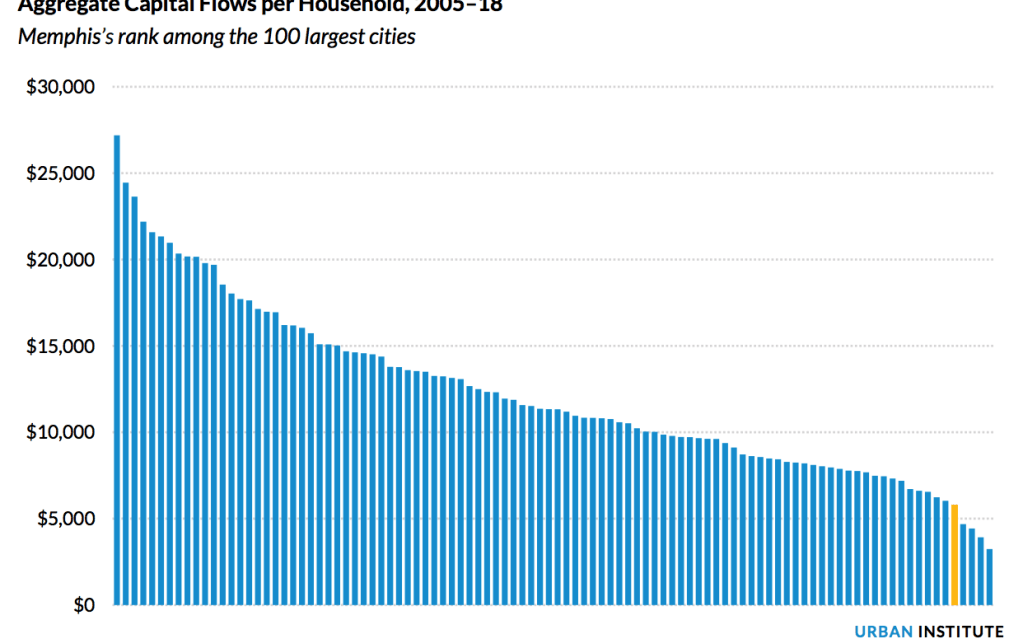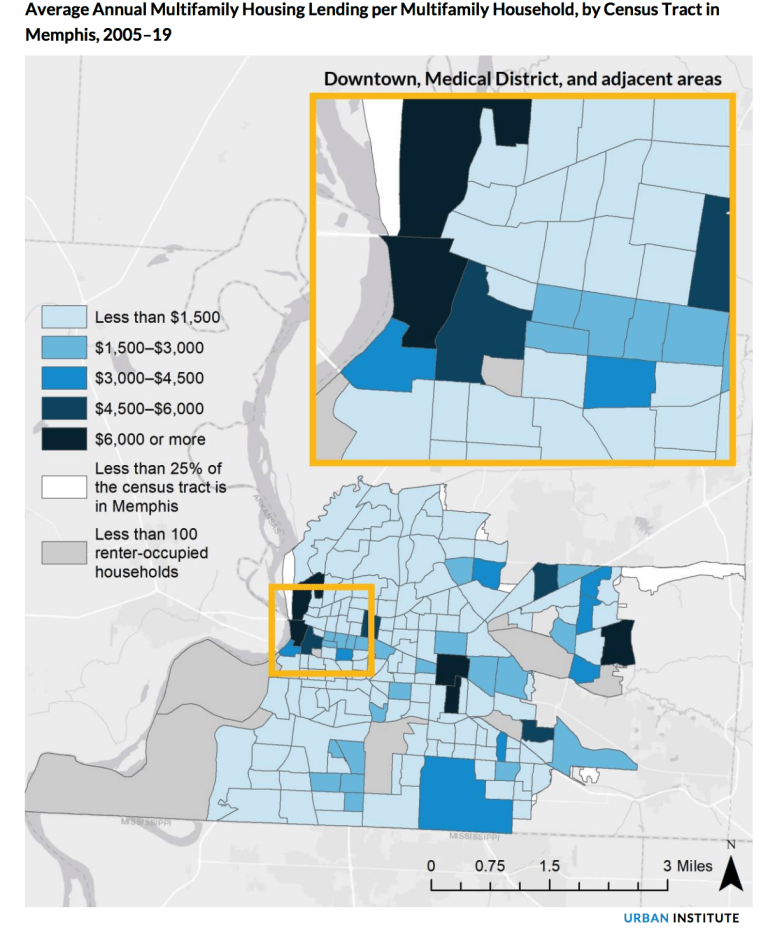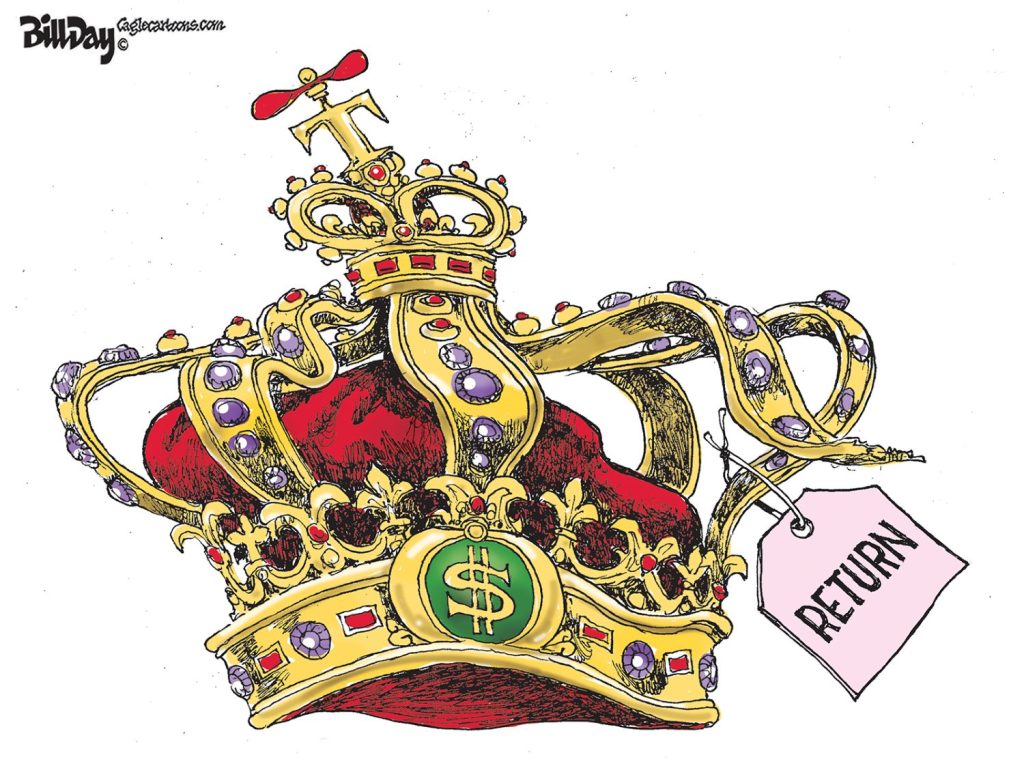How many wake-up calls can Memphis get before one of them is the knock-out punch?
It’s the question that Memphis leaders should be asking themselves.
Unfortunately, if history is the best predictor of the future, they aren’t.
Because of it, there’s little reason to expect the kind of urgency and immediacy from the presumptive leadership that are required to change the city’s trend lines. That is likely despite conclusions in an Urban Institute released last week about Memphis’ weak system to finance community development in underserved neighborhoods.
For the first time in many years, there is a generation of activists who now refuse to accept the status quo and are mobilizing to drive the kind of transformative change Memphis needs.
Breaking Tradition
It’s been about 15 years since I wrote here that Memphis has no margin for error. In fact, at one point, Memphis Mayor A C Wharton Jr. said it too. To underscore the point, this blog has concentrated on data-based commentaries and the posting of crucial data points designed to drive action.
But while some data has made its way into discussions, speeches, and editorials, they were overshadowed by hyperboles about momentum, moving in the right direction, downtown Renaissance, historic investments, and more.
In other words, Memphis leaders are often hypnotized by the rhetoric. Meanwhile, the city’s crucial data points got worse. Like the frog boiling in the pot as the water got hotter and hotter, Memphis strolled toward the future as if its trend lines were going to miraculously change on their own accord.
There’s a Memphis tradition that whenever there is a challenge or crisis, people turn to City Hall and others for the answer. As a result, solutions have often been insular, bureaucratic, and not as bold as substantive progress demanded.
For example, despite all the happy talk and reports about the economy, crucial economic indicators have gotten worse, and Memphis has fallen behind cities it used to lead.
Wake-Up Calls
Here are some wake-up calls from recent months:
- Memphis is one of the most segregated cities in the U.S. – either #5 or #6.
- Memphis is 1 of 7 major cities that lost population in 7 of last 8 years.
- 160,000 Memphis renting households are cost-burdened.
- Memphis ranked #95 among city park systems, down 10 spots in five years
- Key measurements for 53 largest regions show a languishing economy (2008-2018):
- #47 – increase in jobs
- #49 – change in gross metropolitan product
- #49 – change in employment rate
- #48 – change in median earnings
- #53 – Change in top/bottom neighborhoods employment rate gap
- #41 – Change in jobs at young firms
- Five zip codes have poverty rates higher than 40% and one is more than 60%
- 51% of African American workers earn less than $15 an hour (down from 61% in 2000) and it compares to $23 for white workers
The troubling data points go on and on.
Where To Find Leadership?
But here’s the question: when’s the last time you heard a leader in Memphis cite this data to make the case that Memphis needs an interconnected plan of action to change the city’s trajectory?
At best, the economy is sluggish compared to its peer cities and worst of all, it is punishing when it comes to about half of the city.
All of this brings us to last week’s research report by the Urban Institute – Community Development in Finance in Memphis: Assessing Capital Flows, the Local Ecosystem, and Opportunity Zones – which is more than a wake=up call. It feels like a potential knock-out blow.
The conclusion: Memphis is #96 out of the 100 largest U.S. cities in per-person access to loans, grants, and other capital. In Memphis, it’s $5,000 and most cities are twice that.
And what money there is is spent downtown, East Memphis, and white neighborhoods, the report said, adding that the philanthropy on which so much in community development is dependent here is lower than other cities.
A Weak Ecosystem
The report concluded that when compared to other cities, Memphis lacks a strong ecosystem to drive community development initiatives, including ways to finance them, and what does exist is highly segregated.
Urban Institute researchers wrote:
“Our study reveals that capital flows in Memphis are deeply segregated—much like the city itself. This is especially evident in neighborhood-level trends along the lines of race and poverty. Inequity is apparent across investment type, though some are more disparate than others. Loans from the mission sector (such as those from CDFIs), as well as federal community development subsidies, are more prevalent in communities of color and high-poverty neighborhoods. However, these sources are small relative to mainstream market capital flows and, as such, are not sufficient to overcome investment disparities.
“As in the rest of the country, segregation intersects with poverty in Memphis. Only about percent of white Memphians live in neighborhoods where at least 40 percent of the population is living in poverty, but 20 percent of Black residents do…poverty and race intersect geographically. The northern and southern areas of the city hold larger concentrations of Black residents and are the areas where poverty is more prevalent. As in most parts of the country, this correlation is explained by decades and centuries of purposeful disinvestment in Black neighborhoods by the government and the private sector. Through redlining and exclusionary tactics, the public sector and private actors undermined Black wealth in South and North Memphis by deeming these neighborhoods ‘unsafe’ for mortgage and construction lending.”
A Memphis financial representative summed up the city this way to researchers: “What happens in Memphis is that it’s all about relations. Most people of color, [people in] low- to moderate-income neighborhoods, don’t have those relationships with banking institutions, and many people within those banking institutions hold the belief that those communities are in decline, are not redeemable, or are high risk…You can make those deals, but it’s all about sophistication. We need that sophistication.”
Recommendations
To create a better future and an effective ecosystem, the Urban Institute included six recommendations. They are fairly predictable for these kinds of reports but what is particularly revealing is the narrative backed up by numerous powerful graphs that tell the story of a city that needs dramatic and lasting change.
Here are the recommendations:
- Grow and strengthen the local ecosystem of lending and intermediaries. Not all cities have the number of CDFIs, development finance authorities, and quasi-public organizations that Memphis does. Grants, affordable loans, and technical assistance are ways these groups help community development actors and small businesses meet their capital needs. But more can be done to strengthen this sector.
- Support CDCs to increase their capacity for sponsoring and cultivating community development projects. As with CDFIs, technical capacity and grants will be key to improving CDCs’ capacity to put together capital stacks beyond equity and debt and to incorporating government incentives such as low-income housing tax credits, New Markets Tax Credits, and historic tax credits. Because CDCs are place-based, they are key to driving more capital to projects in neighborhoods other than downtown and East Memphis.
- Revise local and state tax structures so multifamily housing is not at a disadvantage against single-family housing. This is challenging and would include changes at the state level. But other urban areas in Tennessee are likely facing similar issues, increasing the likelihood that a cross-city coalition could be formed to catalyze action. Changes can be limited to how properties are defined for appraisal (e.g., what constitutes a commercial property), the tax rates themselves, or even substitution of the traditional property tax system for a land-value tax structure that will encourage owners of expensive land to build more intensively.
- Consider tax abatements and other incentives for community development projects that fit the priorities of the city and the county, particularly in historically underresourced tracts, pushing development beyond its traditional nodes. When applicable, the public and private sectors can explore ways to strategically use these incentives in tandem with Opportunity Zones to advance priority projects.
- Deepen corporate, traditional, and family philanthropy into community development finance. The corporate sector’s involvement in community development is limited, and traditional and family philanthropy’s is mixed. Corporate and philanthropic leaders should enhance their engagement with community development projects in underresourced neighborhoods (where many of their employees likely live).
- Increase metropolitan coordination. Our interviewees agreed that a lack of coordination between the three states that contain the Memphis MSA and the redundancies between the City of Memphis and Shelby County were barriers to attracting capital. Arkansas, Mississippi, Tennessee, and the local jurisdictions that make up this MSA should explore the viability and appropriateness of a metropolitan authority or coordinating entity involved in urban development.
Avoiding The Knock-Out Blow
The Urban Institute report feels like much more than just another wake-up call. It is much more than that. The charts and graphs arguably paint a devastating picture of a failure of leadership.
It’s obvious that unless the devastating trends lines captured in them are improved, Memphis may already be knocked down and on the mat.
Recent history and progress suggest that real change will likely come from the grassroots and the community organizing that is under way there. If they are successful, Memphis may not be out for the count. But the city can’t absorb any more wake-up calls.
***
Join us at the Smart City Memphis Facebook page for daily articles, reports, and commentaries relevant to Memphis and the conversations that begin here.





